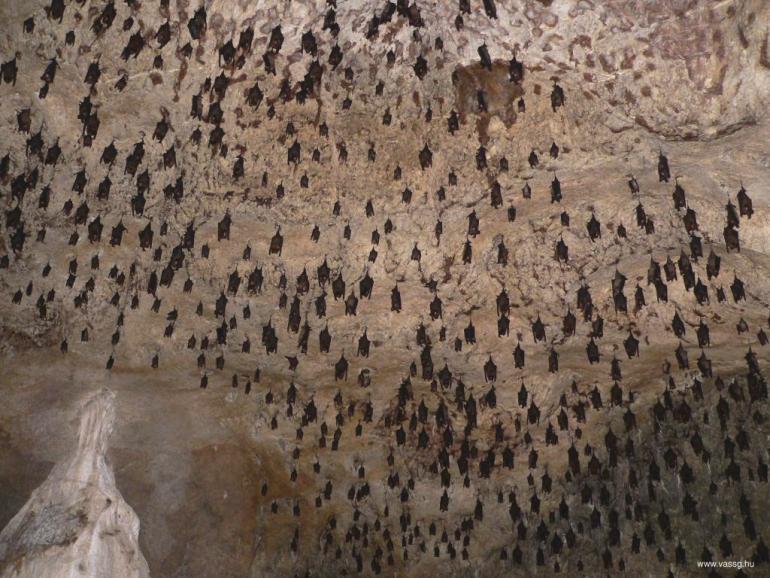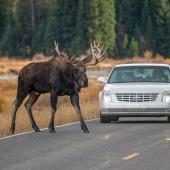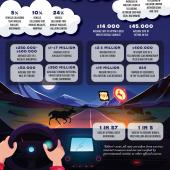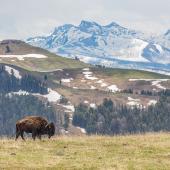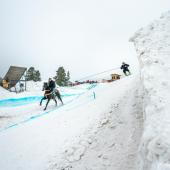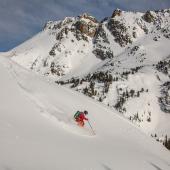Sonic Youth
Bats in Montana.
People don't usually think of bats when they think of Montana, but Lewis & Clark Caverns State Park is a great place to view these critters close up. During the right time of year (generally, summertime), you're almost guaranteed to see bats on every trip through the Caverns even the teeny tiny baby bats.
Two bats that make Lewis & Clark Caverns their summer home: the Little Brown Bat and the Townsend’s Big-Eared Bat. The Little Brown Bat is found statewide in most habitats and is the species most commonly encountered by people. A bigger viewing treat is the rarely seen Townsend’s Big-Eared Bat. It's only two-and-a-half inches high with a wingspan of 12 inches—small enough to fit in the palm of your hand.
The Caverns hosts one of the few known nursery colonies of Townsend Big-Eared Bats in the state, which is why the Caverns are listed in Bat Conservation International's Bat Viewing Guide to America as an excellent location to view this species of special concern.
To the Bat Cave
Female bats start arriving at the Caverns in April to form a nursery colony. Toward the end of May they start forming clusters on the walls of the cave. These clusters can move every day as the bats search for the best birthing location. Around the second week in July, each mother has a single baby, called a pup. The pup clings to its mother’s back for two or three days until it's strong enough to grab the cave walls. Babies are nursed for five to six weeks; by that time they're flying on their own.
The bats in Lewis & Clark Caverns roost near the entrance to the cave. The temperature there in the summer is near 60 degrees, while further in the cave the temperature is cooler. The females need the heat to maintain a higher metabolic rate, which helps them effectively produce and feed their young. Male bats prefer cooler caves to keep their metabolism down to conserve energy.
The bats in Lewis & Clark Caverns also choose to roost near the entrance so they can detect outside temperatures. If it's too cold for food (flying insects) to be available, they sit tight inside the cave and conserve energy. One interesting feeding habit: While most bats catch their prey in flight, the Townsend Big-Eared Bat can hover like a helicopter and snatch bugs from plants.
Townsend Big-Eared Bats like to be out in the open and not hidden in remote crannies in the cave. This makes them particularly vulnerable to human disturbance. These bats are sensitive mothers, and they may abandon their young if they feel threatened, or they may move their young to unsafe areas of the cave. Minimal disturbance is the key to keeping the colony healthy and growing. At the Caverns, the first tour guide in the morning calls in the location of the bats and other guides then know what areas of the cave to go quietly through.
The Awakening
When it starts freezing at night, there is no longer a food source for the bats and they leave the Caverns to find another cave for their hibernation. We do not know where that cave is or how far they go.
The bats need a cave with a temperature just above freezing, so that their body temperature cools enough for hibernation. This is a major period of mortality for the bats, who may lose over half their body weight during the winter. It's also a period of extreme vulnerability, a disturbance can trigger an awakening response which is irreversible and will proceed until the bat is fully warm, even though the source of disturbance has disappeared. Much fat is lost during this process, and a bat only stores enough winter fat to support two or three awakenings. One of these must be the natural one in the spring.
Bats are slowly gaining the recognition they deserve because many diverse groups are starting to play a role in their conservation. In Montana, for example, the Montana Bat Working Group (wbwg.org/state_prov_sites/montana.html) studies the state's bats with an eye toward their protection. Nationally, Bat Conservation International (batcong.org) also works to research, protect, and educate people about bats.
Lynette Kemp is the manager of Lewis & Clark Caverns State Park.


